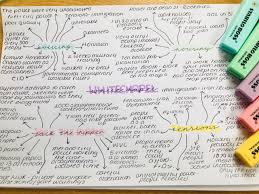Relationship breakdown
Cards (8)
- who came up with the model of relationship breakdown?Duck
- what key aspect marks the beginning of the breakdown of a relationship?
- begins when one of the partners becomes distressed with the way the relationship is conducted
- inequitable relationships are much more likely to create dissatisfaction than equitable ones
- the realisation that the person is no longer able to stand the dissatisfaction is the first step in the relationship's breakdown
- what are the 5 key stages of Duck's model?
- Breakdown (dissatisfaction with the relationship)
- Intrapsychic phase
- dyadic phase
- social phase
- grave-dressing phase
- state what is involved in the intrapsychic phase
- brooding focus on the relationship
- consideration of whether/not they would be better off out of the relationship
- feelings of resentment
- may not express these things to a partner but keep a diary or through social withdrawal
- person might end relationship without ever discussing satisfaction
- promises like I'll call you or let's stay friends often represent a deeper dissatisfaction with the other person as a romantic partner
- state what is involved in the dyadic phase
- individuals confront their partners and discuss feelings, discontentment and the future of the relationship
- guilt/anger likely to surface as part of these discussions
- partners become aware of costs should the relationship be terminated (eg- social and economic costs)
- relationship can either be saved if partners are willing to resolve issues together through eg therapy, or they begin to involve others in the relationship problems
- state what is involved in the social phase
- dissatisfaction stops being private and spills over to family and friends
- distress experienced by one/both partners is made public
- makes it harder to find reconciliation and harder to deny there's a problem with the relationship
- others may take sides, offer support and advice and help in mending disputes. They may help each partner be exposed to revelations about the other, speeding up the process
- state what is involved in the grave-dressing phase
- post relationship, each partner presents themselves as trustworthy- key to attract a new partner
- strive for representation of their relationship that doesn't present their contributions to it as unfavourable
- La Gaipa- everyone who leaves a relationship has to leave with their social credit intact, so not debarred from future relationships
- strategic reinterpretation of how they view their partners- eg initially being attracted to a rebellious nature but seeing it now as irresponsibility
- stories told about betrayal of one partner to another
- evaluation of relationships breakdown?
- ☹ Duck admitted- didn't include the possibility of moving on healthily- Tashiro and Frazier- 92 undergrads experienced emotional distress AND personal growth post relationship, causing Duck to produce a new model which included this feature
- ☹ social phase varies- younger people receive less encouragement to salvage relationship, Dickson- older people in longer term rels expect finding replacement less
- 😊 research for grave dressing- Tashiro and Frazier- people feel better when they focus on the situation, not own flaws being responsible for breakup
- ☹ ethical issues- breach of privacy in studying relationship breakdown can cause stress (ethical implications). Socially sensitive- describes stress caused as a result of entering a relationships and can cause people to look down on those who engage with romantic relationships, or discourage people from getting into them
